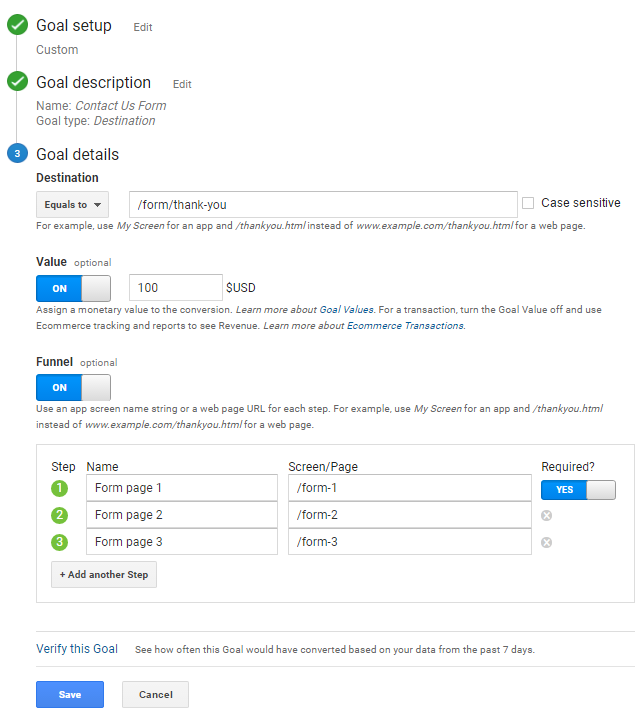Comprehensive Checklist of What Data Is Google Analytics Goals Unable to Track
Comprehensive Checklist of What Data Is Google Analytics Goals Unable to Track
Blog Article
Discover the Limitations of Google Analytics Goals: Introducing the Information Kind That Remain Untrackable
As companies significantly rely on data-driven decision-making, comprehending the constraints of tools like Google Analytics ends up being critical. While Google Analytics Goals offer important insights right into user communications, there exist information types that elude tracking, positioning obstacles to a detailed understanding of user actions.
Incomplete Customer Journey Tracking
Insufficient customer trip tracking within Google Analytics can prevent the capability to properly evaluate individual habits. When the individual trip is not totally tracked, there are spaces in the data that protect against a comprehensive understanding of how users interact with a website. This lack of understanding can result in missed opportunities for optimization and enhancements to the individual experience.
One common concern with insufficient customer trip monitoring is the lack of ability to see the complete course that customers take in the past finishing an objective or leaving the site. Without this info, it is testing to identify where individuals may be coming across obstacles or friction factors that stop them from converting. In addition, incomplete tracking can cover the influence of certain advertising efforts or internet site changes on user actions.
To resolve this constraint, it is crucial to set up correct monitoring devices within Google Analytics to capture the entire user journey. This may include setting up event tracking, objective funnels, or using devices like Google Tag Supervisor to make certain that no crucial interactions go unrecorded. By obtaining a thorough sight of the customer trip, website owners can make even more educated choices to enhance individual interaction and drive conversions.
Acknowledgment Challenges
Navigating via attribution difficulties in Google Analytics calls for a thorough understanding of how different touchpoints add to the overall conversion process. Acknowledgment obstacles develop from the intricacy of modern customer journeys, where customers connect with multiple channels before converting. Google Analytics supplies various acknowledgment models like first touch, last touch, and direct, each using a different point of view on exactly how credit history is designated to touchpoints along the conversion course. These versions may not constantly properly mirror the true influence of each touchpoint on the conversion.
One common attribution obstacle is the trouble in attributing conversions to the proper resource, specifically in situations where users communicate with several networks prior to converting. This can bring about mistakes in determining which marketing initiatives are driving one of the most conversions. In addition, cross-device monitoring positions another acknowledgment difficulty, as customers often switch between gadgets throughout their trip, making it challenging to track their communications perfectly. Marketers need to thoroughly examine and analyze attribution data to make informed decisions and maximize their marketing strategies successfully.
Offline Conversions
Given the challenges connected with attributing conversions precisely in online channels, the measurement of offline conversions offers a significant possibility for online marketers looking for an extra thorough understanding of their clients' journey. Offline conversions refer to activities that clients take in the physical world, such as making acquisitions in brick-and-mortar shops or over the phone, going to occasions, or involving with printed materials - what data is google analytics goals unable to track. These conversions are vital for businesses that operate both online and offline, as they supply beneficial understandings right into the effectiveness of advertising and marketing projects throughout numerous touchpoints
Tracking offline conversions typically posed a significant obstacle for online marketers, as it was testing to attach these actions back to specific on the internet interactions properly. With developments in modern technology, such as the integration of CRM systems, one-of-a-kind identifiers, and voucher codes, organizations can now connect the space between online and offline data to acquire a more all natural sight of customer habits. By successfully measuring offline conversions, marketers can optimize their approaches, assign resources much more efficiently, and inevitably boost the overall customer experience.
Cross-Device Monitoring
Cross-device tracking plays an important role in understanding the interconnected nature of consumers' electronic interactions throughout multiple tools. In today's omnichannel world, where users perfectly change between desktops, smartphones, and tablets, tracking their habits throughout these tools is essential for marketing professionals to get an extensive view of their client journey.

In addition, privacy issues and laws such as GDPR and CCPA have additionally difficult cross-device tracking. With individuals demanding even more control over their data and boosted restrictions on monitoring innovations, online marketers need to locate innovative and privacy-compliant methods to connect user interactions across tools.
Dynamic Material Interaction
Understanding customer engagement with vibrant content is pivotal in optimizing digital index marketing techniques for improved audience interaction. Dynamic content describes internet site components that transform based on individual habits, choices, or other variables, using a tailored experience. Tracking customer interactions with dynamic web content presents obstacles for standard analytics tools like Google Analytics.
While Google Analytics can track fundamental communications like clicks and page views, it may battle to record more nuanced engagements within dynamic content. what data is google analytics goals unable to track. Metrics such as time invested in specific dynamic components, hover activities, or communications within pop-ups are usually not quickly quantifiable making use of common monitoring techniques. This restriction impedes marketing professionals' capacity to completely comprehend exactly how individuals are involving with vibrant web content and customize their methods appropriately

Conclusion
Finally, Google Analytics goals have constraints in tracking insufficient individual journeys, connecting conversions accurately, catching offline conversions, tracking cross-device interactions, and determining dynamic web content involvement. These constraints highlight the importance of exploring added monitoring approaches and devices to Learn More Here get a much more thorough understanding of customer habits and conversions past what Google Analytics can offer.
While Google Analytics Goals deal important understandings right into individual interactions, there exist data types that avoid tracking, positioning challenges to a detailed understanding of customer behavior.Insufficient individual trip monitoring within Google Analytics can prevent the ability to precisely analyze customer behavior. When the customer trip is not totally tracked, there are spaces in the information that prevent a detailed understanding of how customers engage with a website.One typical concern with incomplete user journey monitoring is the failure to see the complete path that customers take previously completing a goal or leaving the site. By getting a thorough view of the customer journey, site proprietors can make go to my blog even more informed choices to enhance individual engagement and drive conversions.
Report this page